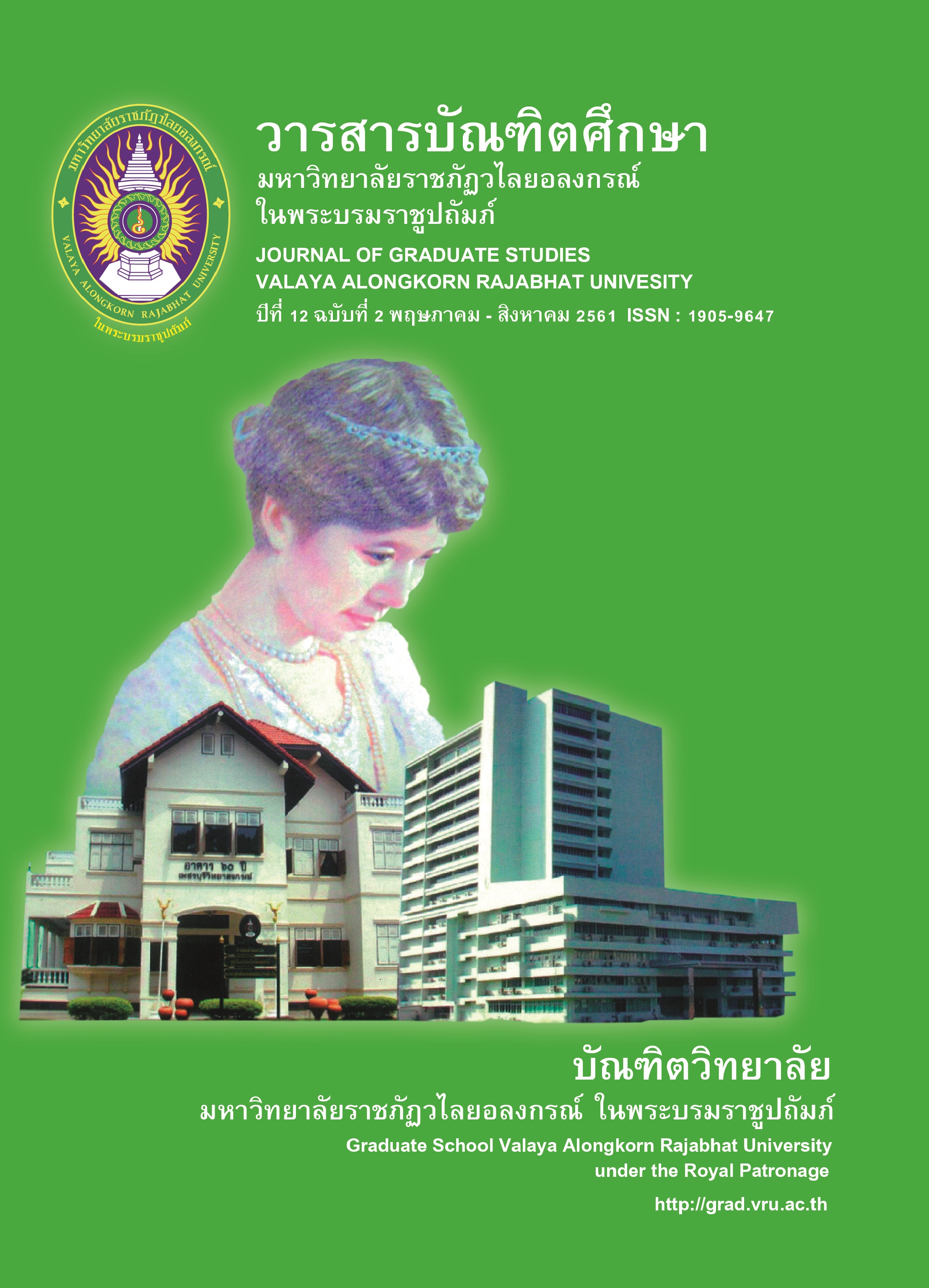THE RELATIONSHIP BETWEEN THE SEMANTIC SYSTEM OF “CUTTING TERMS” AND THE COGNITION OF THAI SPEAKERS AND NORTHERN SGAW KAREN SPEAKERS: A TEST OF LINGUISTIC RELATIVITY HYPOTHESIS
Main Article Content
Abstract
The linguistic relativity hypothesis concerns the influence of language on thought or cognition. The concept of this hypothesis is that different languages can affect to speakers’ thought. The objective of this research is to test the relationship between language and cognition of the semantic system of “Cutting Terms” of Thai speakers and northern Sgaw Karen speakers. It found that the semantic system of “Cutting Terms” in northern Sgaw Karen classifies this terms based on the weight more than Thai. Cognitive experiments of attention and categorization were conducted on 15 northern Sgaw Karen speakers and 15 Thai speakers. Statistics used for data analysis were percentage and analysis of variance. The result of the cognitive experiments revealed that northern Sgaw Karen paid more attention to and classified the objects based on the weight more than Thai speakers corresponding to the pattern of language. The results support the linguistic relativity hypothesis.
Article Details
บทความทุกเรื่องได้รับการตรวจความถูกต้องทางวิชาการโดยผู้ทรงคุณวุฒิ ทรรศนะและข้อคิดเห็นในบทความวารสารบัณฑิตศึกษา มหาวิทยาลัยราชภัฏวไลยอลงกรณ์ ในพระบรมราชูปถัมภ์ มิใช่เป็นทรรศนะและความคิดของผู้จัดทำจึงมิใช่ความรับผิดชอบของบัณฑิตวิทยาลัย มหาวิทยาลัยราชภัฏวไลยอลงกรณ์ ในพระบรมราชูปถัมภ์ กองบรรณาธิการไม่สงวนสิทธิ์การคัดลอก แต่ให้อ้างอิงแหล่งที่มา
References
ปริชานของผู้พูดภาษาไทยและภาษาอังกฤษ. วิทยานิพนธ์ระดับดุษฎีบัณฑิต ภาควิชาภาษาศาสตร์ จุฬาลงกรณ์มหาวิทยาลัย.
ชุติชล เอมดิษฐ. (2551). ความสัมพันธ์ระหว่างระบบคำกริยา ‘ตี’ กับระบบปริชานของผู้พูด ภาษาไทยและผู้พูดภาษาขมุ : การทดสอบสมมติฐานวอร์ฟ. วิทยานิพนธ์ระดับมหาบัณฑิต ภาควิชาภาษาศาสตร์ จุฬาลงกรณ์มหาวิทยาลัย.
วริสรา จันทรัฐ. (2556). ความสัมพันธ์ระหว่างระบบเกียรติยศในภาษากับระบบปริชานของผู้พูดภาษาญี่ปุ่น ภาษาไทยและภาษาอังกฤษ. วิทยานิพนธ์ระดับมหาบัณฑิต ภาควิชาภาษาศาสตร์ จุฬาลงกรณ์มหาวิทยาลัย.
อนงค์นาฏ นุศาสตร์เลิศ. (2552). ความสัมพันธ์ระหว่างระบบคำกริยา ‘ใส่’ กับระบบปริชานของผู้พูดภาษาไทยและภาษาญี่ปุ่น : การทดสอบสมมติฐานวอร์ฟ. วิทยานิพนธ์ระดับมหาบัณฑิต ภาควิชาภาษาศาสตร์ จุฬาลงกรณ์มหาวิทยาลัย.
Choi, Soonja, and Melissa Bowerman. (1991). Learning to express motion events in Korean and English: The influence of language-specific lexicalization patterns. Cognition 41, 83–121.
Humboldt, Wilhelm Von. (1988). On Language: the Diversity of Human Language Structure and its Influence on the Mental Development of Mankind. Translated by P.Health. Cambridge: Cambridge University Press.
Lucy, John. (1992). Grammatical Categories and Cognition: A Case Study of the Linguistic Relativity Hypothesis. Glasgow: Cambridge University Press.
Nida, Eugene. (1979). Componential Analysis of Meaning: An Introduction to Semantic Structures. The Hague: Mouton.
Sapir, Edward. (1921). Culture, Language and Personality. Berkeley and Los Angeles: University of California Press.
Whorf, Benjamin Lee. (1956). Language, Thought and Reality. Cambridge: The M.I.T. Press.


